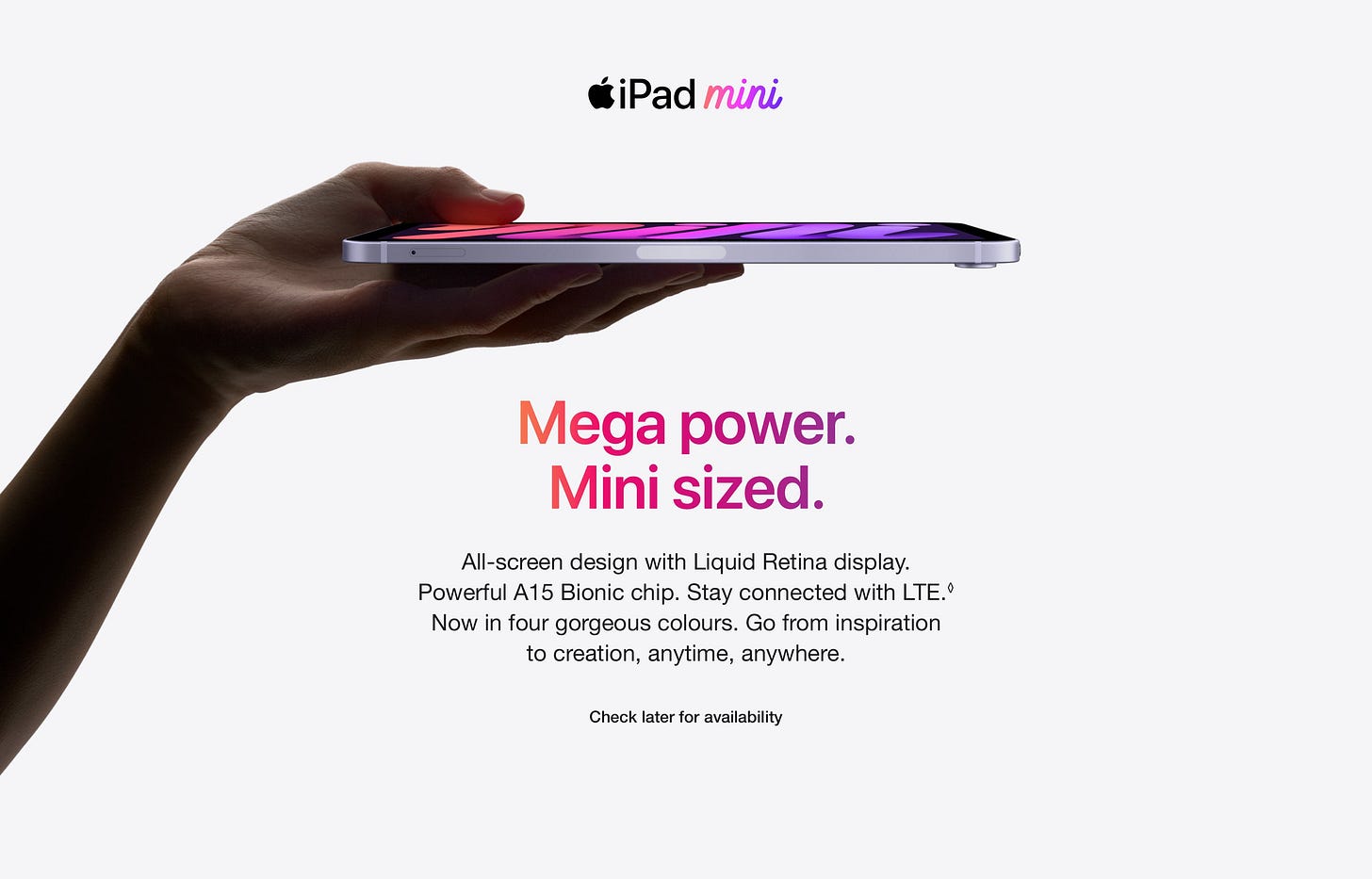Use opposites
The fastest way to write punchy, high-conversion copy.
In 2012, Apple launched the iPad Mini with a simple, two-line ad:
“Mega power. Mini sized.”
That’s it.
No tech jargon. No specs.
Just two opposites—mega and mini—sitting side by side, sparking curiosity and admiration in one go.
It didn’t just describe the product. It created tension.
How could something mini be mega powerful?
That’s the secret.
Why Opposites Work in Copy
When you pair two ideas that seem to contradict, you get:
🔹 Memorability (the contrast sticks)
🔹 Tension (your brain wants to resolve the paradox)
🔹 Instant positioning (you frame your product as unique)
It’s a poetic way of saying:
“You don’t have to compromise.”
Before & After Examples
🚫 Before: “Our charger is compact but delivers a lot of power.”
✅ After: “Big charge. Tiny body.”
🚫 Before: “Our insurance is fast and reliable.”
✅ After: “Speed meets safety.”
🚫 Before: “This sneaker is lightweight and strong.”
✅ After: “Soft landings. Hard performance.”
Real-World Examples
🔹 Apple: “Mega power. Mini sized.”
🔹 Ford: “Built tough. Drives smooth.”
🔹 Mr. Clean: “Strong on dirt. Gentle on skin.”
🔹 Diet Coke: “Great taste. Zero sugar.”
🔹 Amazon Kindle: “Reads like real paper. Without the paper.”
These aren’t just clever—they’re strategic.
They flip expectations and spotlight what makes the product special.
Try This in Your Copy:
Write down your product’s 2 best features.
Find tension or contrast between them.
Rewrite using short, opposite-phrased lines.
You may also like:
✅ Use hypophora to guide readers
✅ Make your headline a promise
✅ Delete “very”
Enjoyed this one? Share it with someone who writes.


